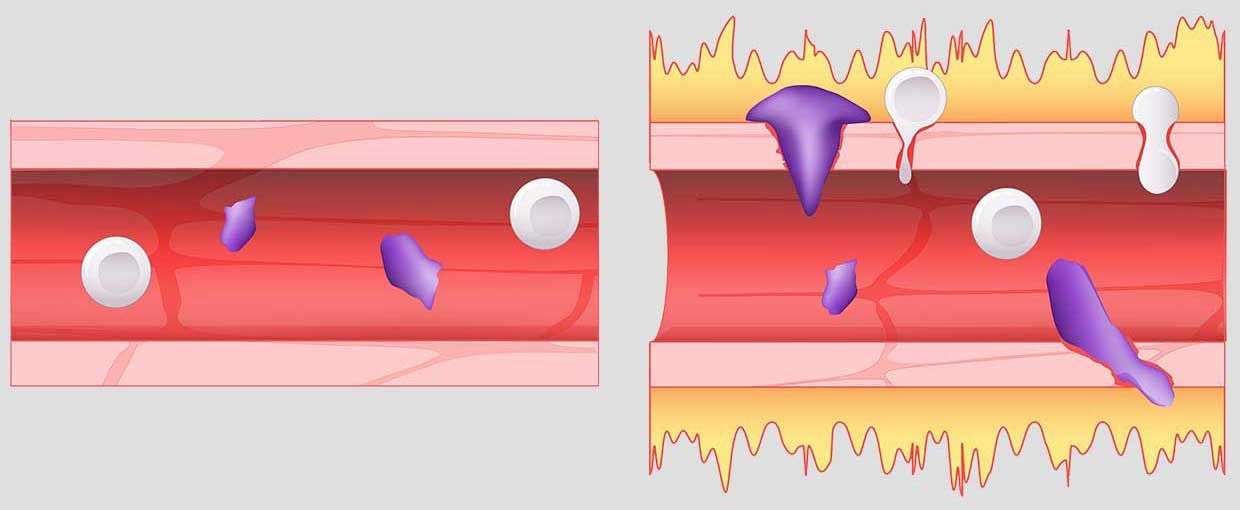A supercomputer-powered genetic study of COVID-19 patients has spawned a possible breakthrough into how the novel coronavirus causes disease—and points toward new potential therapies to treat its worst symptoms.
The genetic data mining research uncovered a common pattern of gene activity in the lungs of symptomatic COVID-19 patients, which when compared to gene activity in healthy control populations revealed a mechanism that appears to be a key weapon in the coronavirus’s arsenal.
The good news is there are already drugs—a few of which are already FDA-approved—aimed at some of these very same pathologies.
“We think we have a core mechanism that explains a lot of the symptoms where the virus ends up residing,” said Daniel Jacobson, chief scientist for computational systems biology at Oak Ridge National Labs in Oak Ridge, Tenn.
The mechanism, detailed in Jacobson’s group’s new paper in the journal eLife, centers around a compound the body produces to regulate blood pressure, called bradykinin. A healthy body produces small amounts of bradykinin to dilate blood vessels and make them more permeable. Which typically lowers blood pressure.

However, Jacobson said, lung fluid samples from COVID-19 patients consistently revealed over-expression of genes that produce bradykinin, while also under-expressing genes that would inhibit or break down bradykinin.
In other words, the new finding predicts a hyper-abundance of bradykinin in a coronavirus patient’s body at the points of infection, which can have well-known and sometimes deadly consequences. As Jacobson’s paper notes, extreme bradykinin levels in various organs can lead to dry coughs, myalgia, fatigue, nausea, vomiting, diarrhea, anorexia, headaches, decreased cognitive function, arrhythmia and sudden cardiac death. All of which have been associated with various manifestations of COVID-19.
The bradykinin genetic discovery ultimately came courtesy of Oak Ridge’s supercomputers Summit and Rhea, which crunched data sets representing some 17,000 genetic samples while comparing each of these samples to some 40,000 genes.

Summit, the world’s second fastest supercomputer as of June, ran some 2.5 billion correlation calculations across this data set. It took Summit one week to run these numbers, compared to months of compute time on a typical workstation or cluster.
Jacobson said that the genetic bradykinin connection the team made may have rendered COVID-19 a little less mysterious. “Understanding some of these fundamental principles gives us places to start,” he said. “It’s not as much of a black box anymore. We think we have good indications of the mechanisms. So now how do we attack those mechanisms to have better therapeutic outcomes?”
One of the most persistent and deadly outcomes of extreme COVID disease involves the lungs of patients filling with fluid, forcing the patient to fight for every breath. There, too, the mechanism and genetic pathway the researchers have uncovered could possibly explain what’s going on.
Because bradykinin makes blood vessels more permeable, lung tissue gets inundated with fluid that begins to make it swell. “You have two interconnected pathways, and the virus can tilt the balance to these two pathways with a catastrophic outcome,” Jacobson said. “The bradykinin cascade goes out control, and that allows fluid to leak out of the blood vessels, with immune cells infiltrating out. And you effectively have fluid pouring into your lungs.”
The presence of typically blood-borne immune cells in the lungs of some patients can, Jacobson said, also produce extreme inflammation and out-of-control immune responses, which have been observed in some coronavirus cases.
But another genetic tendency this work revealed was up-regulation in the production of hyaluronic acid. This compound is slimy to the touch. In fact, it’s the primary component in snail slime. And it has the remarkable property of being able to absorb 1000 times its own weight in water.
The team also discovered evidence of down-regulated genes in COVID patients that might otherwise have kept hyaluronic acid levels in check. So with fluid inundating the lungs and gels that absorb those fluids being over-produced as well, a coronavirus patient’s lung, Jacobson said, “fills up with a jello-like hydrogel.”
“One of the causes of death is people are basically suffocating,” Jacobson said. “And we may have found the mechanisms responsible for how this gets out of control, why all the fluid is leaking in, why you’re now producing all this hyaluronic acid—this gelatin-like substance—in your lung, and possibly why there are all these inflammatory responses.”
Jacobson’s group’s paper then highlights ten possible therapies developed for other conditions that might also address the coronavirus’s “bradykinin storm” problem. Potential therapies include compounds like icatibant, danazol, stanozolol, ecallantide, berinert, cinryze and haegarda, all of whose predicted effect is to reduce bradykinin levels in a patient. Even Vitamin D, whose observed deficiency in COVID-19 patients is also explained by the group’s research, could play a role in future COVID-19 therapies.
None of which, it’s important to stress, has yet been tested in clinical trials. But, Jacobson said, they’re already in touch with groups who are considering testing these new findings and recommended therapies.
“We have to get this message out,” Jacobson said. “We have started to be contacted by people. But … clinical partners and funding agencies who will hopefully support this work is the next step that needs to happen.”
Source: Spectrum










